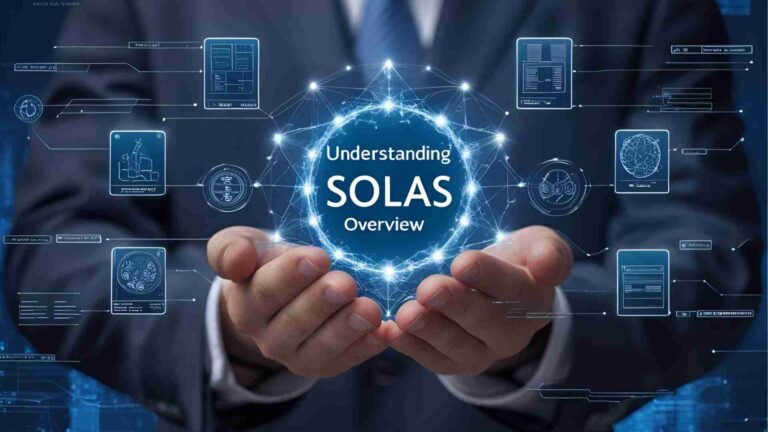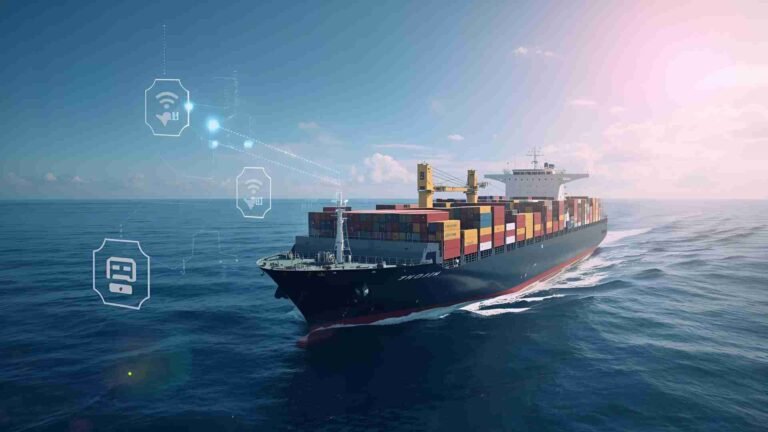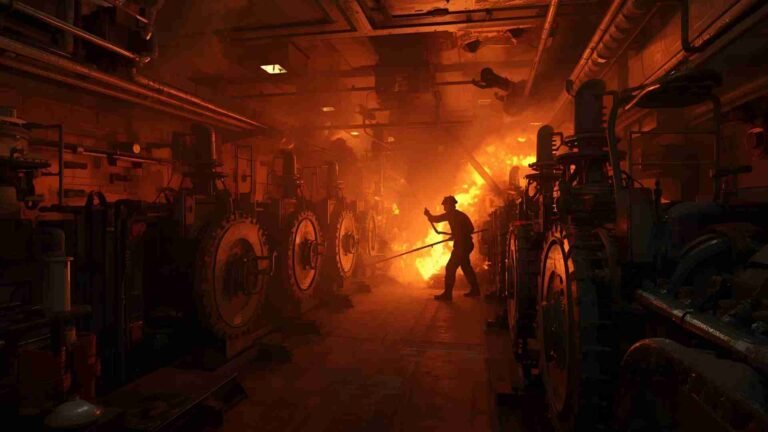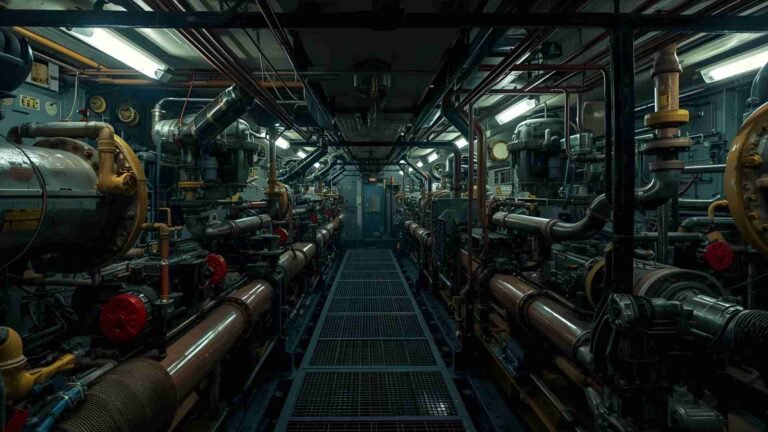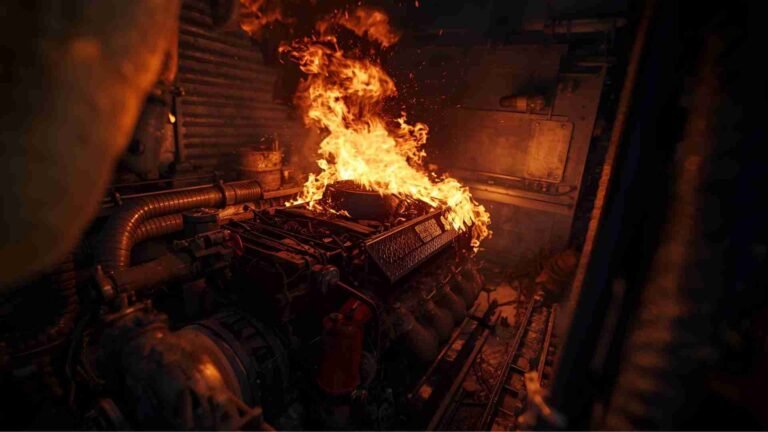IMO approves net-zero regulations for global shipping
IMO’s net-zero framework targets global shipping emissions by 2050 with fuel standards and pricing. Learn about regulations, fuels, and impacts.
The global shipping industry, responsible for approximately 3% of global greenhouse gas (GHG) emissions, is at a pivotal moment. The International Maritime Organization (IMO), the United Nations agency tasked with regulating international shipping, has taken a monumental step toward decarbonizing the sector. The IMO’s approval of the Net-Zero Framework marks a historic commitment to achieving net-zero GHG emissions by or around 2050. This framework introduces a combination of mandatory emissions limits and a global pricing mechanism for GHG emissions, targeting large ocean-going ships that account for 85% of the industry’s carbon dioxide (CO2) emissions. This article explores the IMO’s net-zero regulations, their components, alternative fuel options, implementation timeline, and their broader implications for the shipping industry and global trade.
The IMO Net-Zero Framework: A Groundbreaking Approach
The IMO Net-Zero Framework, approved during the 83rd session of the Marine Environment Protection Committee (MEPC 83), represents a pioneering effort to decarbonize an entire industry sector. Integrated into a new Chapter 5 of Annex VI of the International Convention for the Prevention of Pollution from Ships (MARPOL), the framework combines technical and economic measures to drive the transition to low- and zero-emission fuels. It is the first global regulatory framework to mandate emissions limits alongside GHG pricing, ensuring both accountability and incentives for compliance.
Key Components of the Framework
The framework is built on two primary pillars:
- Global Fuel Standard (GFS): This standard mandates a phased reduction in the GHG Fuel Intensity (GFI) of ships, measured as the amount of GHG emissions per unit of energy used. The GFI is calculated using a well-to-wake approach, accounting for emissions from fuel production to consumption. Over time, ships must reduce their GFI, with stricter limits enforced through periodic reviews every five years.
- Global Economic Measure: Ships exceeding GFI thresholds must acquire remedial units to offset their emissions deficit. Conversely, ships using zero or near-zero GHG technologies can earn surplus units, providing financial rewards for early adopters. These units can be traded or banked, creating a market-based incentive system.
The IMO Net-Zero Fund, established under the framework, collects contributions from emissions pricing and redistributes revenues to:
- Reward low-emission ships.
- Fund innovation, research, and infrastructure for alternative fuels.
- Support training, technology transfer, and capacity building in developing countries.
- Mitigate adverse impacts on vulnerable states, such as Small Island Developing States (SIDS) and Least Developed Countries (LDCs).
Scope and Compliance
The framework applies to large ocean-going ships over 5,000 gross tonnage, which account for 85% of international shipping’s CO2 emissions. Compliance is enforced through two targets:
- Base Target: The minimum GFI threshold ships must meet.
- Direct Compliance Target: A stricter threshold that allows ships to earn surplus units if achieved.
Non-compliant ships can balance their emissions deficit by:
- Purchasing surplus units from other ships.
- Using previously banked surplus units.
- Contributing to the IMO Net-Zero Fund to acquire remedial units.
This flexible compliance mechanism ensures a just and equitable transition, particularly for developing nations, while encouraging the adoption of sustainable technologies.
Timeline for Implementation
The framework’s adoption and enforcement follow a structured timeline:
- October 2025: Formal adoption of amendments to MARPOL Annex VI during an extraordinary session of the MEPC.
- Spring 2026: Approval of detailed implementation guidelines at MEPC 84.
- 2027: Entry into force, 16 months after adoption, with the first compliance year in 2028.
- Autumn 2028: Review of the 2023 IMO GHG Strategy, leading to the adoption of the 2028 IMO Strategy on GHG reduction.
This timeline reflects the IMO’s commitment to rapid yet feasible implementation, balancing urgency with the need for infrastructure and technological development.

The 2023 IMO GHG Strategy: Setting the Stage
The Net-Zero Framework builds on the 2023 IMO Strategy on Reduction of GHG Emissions from Ships, adopted during MEPC 80. This strategy updated the 2018 Initial GHG Strategy with ambitious targets:
- Net-Zero by 2050: Achieving near-zero GHG emissions from international shipping.
- Indicative Checkpoints:
- By 2030: Reduce emissions by at least 20%, striving for 30% compared to 2008 levels.
- By 2040: Reduce emissions by at least 70%, striving for 80%.
- Carbon Intensity Reduction: Reduce CO2 emissions per transport work by at least 40% by 2030.
- Alternative Fuels Uptake: Ensure zero or near-zero GHG emission technologies, fuels, or energy sources account for at least 5%, striving for 10%, of energy used by 2030.
The strategy emphasizes capacity building, technical cooperation, and research and development to support these goals, with a review scheduled for 2028.
Alternative Fuels: Powering the Transition
Decarbonizing shipping requires a shift from fossil fuels to low- and zero-carbon alternatives. The IMO framework incentivizes this transition by rewarding ships that adopt sustainable fuels. Below is an analysis of key fuel options, their potential, and challenges.
Biofuels
Biofuels are currently the most accessible alternative for existing vessels, as they can be used in conventional engines with minimal modifications. However, their higher cost compared to fossil fuels and limited scalability due to feedstock constraints pose challenges. Biofuels are seen as a transitional solution, bridging the gap until more scalable options emerge.
Ammonia
Ammonia, particularly green ammonia produced using renewable energy, is a promising zero-emission fuel. The IMO has approved interim guidelines for its safe use, addressing hazards such as toxicity and corrosiveness. Ammonia’s scalability makes it a long-term contender, with cost models suggesting it will become competitive by the mid-2030s.
E-Methanol and E-Ammonia
E-methanol and e-ammonia, produced using renewable electricity, offer significant potential for zero-emission shipping. However, their adoption requires substantial investment in production facilities, supply chains, and bunkering infrastructure. These fuels are expected to play a critical role in meeting the 2050 net-zero target.
LNG and Ammonia Dual-Fuel
Dual-fuel ships capable of running on liquefied natural gas (LNG) and ammonia are projected to be cost-competitive until the mid-2030s. LNG, while not zero-emission, produces fewer GHG emissions than traditional fuels, making it a viable interim solution. By 2037, ammonia is expected to dominate due to its zero-emission profile and declining production costs.
| Fuel Type | Emission Profile | Availability | Cost Competitiveness | Key Challenges |
|---|---|---|---|---|
| Biofuels | Low-emission | High | High cost | Feedstock limits, scalability |
| Ammonia | Zero-emission | Emerging | Competitive by 2037 | Safety, infrastructure |
| E-Methanol | Zero-emission | Low | High cost currently | Supply chain development |
| LNG Dual-Fuel | Low-emission | Moderate | Competitive pre-2037 | Transition to zero-emission |
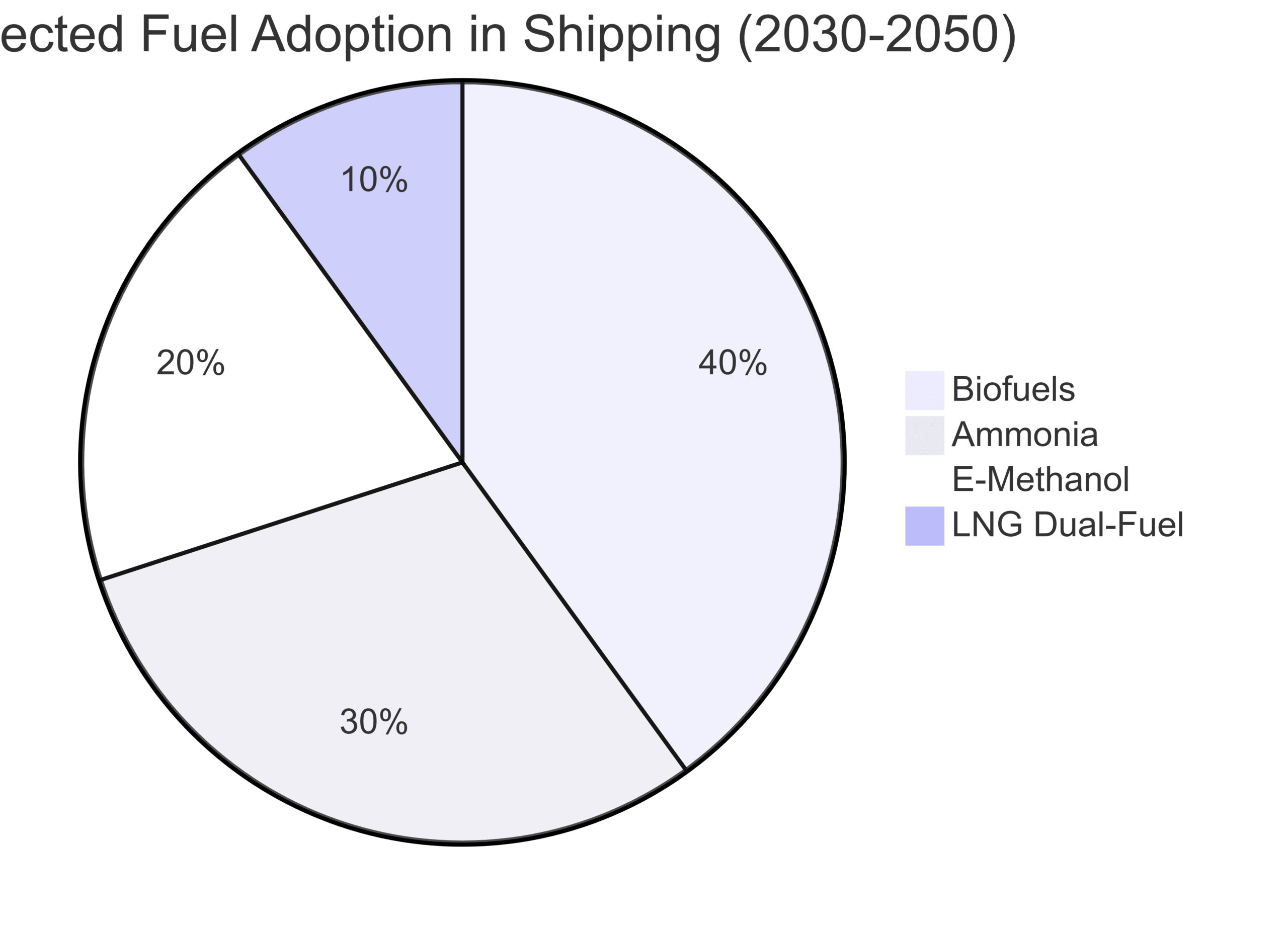
Safety and Infrastructure Challenges
The adoption of alternative fuels introduces safety and infrastructure challenges that the IMO is actively addressing. The Maritime Safety Committee (MSC) and the Sub-Committee on Carriage of Cargoes and Containers (CCC) are developing safety guidelines for fuels like ammonia, methyl/ethyl alcohol, fuel cells, and liquefied petroleum gas (LPG). Key considerations include:
- Safety Protocols: Ensuring safe handling, storage, and use of hazardous fuels like ammonia.
- Training: Equipping crews with the skills to operate new technologies safely.
- Infrastructure: Developing global bunkering networks and supply chains for alternative fuels.
The IMO’s interim guidelines for ammonia and other fuels provide a foundation for safe adoption, with ongoing work to refine these standards.
Economic and Environmental Impacts
The IMO Net-Zero Framework is designed to balance environmental goals with economic considerations. A comprehensive impact assessment conducted in 2023–2024 evaluated the framework’s effects on the global fleet and member states, particularly LDCs and SIDS. Key findings include:
- Economic Incentives: The pricing mechanism rewards early adopters, encouraging investment in low-emission technologies.
- Cost Implications: Transitioning to alternative fuels requires significant upfront investment, but long-term cost savings are expected as fuel production scales.
- Equitable Transition: The IMO Net-Zero Fund supports developing countries by funding infrastructure, training, and technology transfer, mitigating adverse impacts on vulnerable states.
| Impact Area | Potential Benefits | Challenges |
|---|---|---|
| Environmental | Reduced GHG emissions, cleaner oceans | High initial costs, fuel availability |
| Economic | Long-term cost savings, innovation | Infrastructure investment |
| Social (LDCs/SIDS) | Capacity building, technology transfer | Economic burden, implementation gaps |
Supporting Innovation and Capacity Building
The IMO is supporting the transition through various initiatives:
- GreenVoyage2050 Project: Promotes energy efficiency and low-carbon technologies in developing countries.
- Global Industry Alliance (GIA): Facilitates collaboration to support low-carbon shipping.
- GloFouling Project: Addresses hull fouling to reduce GHG emissions.
- Future Fuels and Technology Project: Provides research and data on zero-carbon fuels.
These programs, often funded by member states and international partners, aim to bridge the gap between developed and developing nations, ensuring a just transition.
Onboard Carbon Capture and Storage (OCCS)
Onboard carbon capture and storage (OCCS) is an emerging technology that captures CO2 emissions from ship exhausts for storage or utilization. The IMO is developing a regulatory framework for OCCS, with MEPC 83 approving a work plan to integrate it into existing regulations. While promising, OCCS faces challenges such as high costs, energy requirements, and the need for CO2 storage infrastructure.
Global Context and IMO’s Role
The IMO’s efforts align with global climate goals, including the UN Sustainable Development Goal 13 (climate action) and the Paris Agreement. By attending UNFCCC COP meetings and hosting climate events, the IMO ensures shipping’s decarbonization contributes to broader environmental objectives. The Fourth IMO GHG Study (2020) reported that shipping emissions accounted for 2.89% of global emissions, underscoring the sector’s importance in global climate strategies.
Challenges and Opportunities
While the IMO Net-Zero Framework sets a clear path forward, challenges remain:
- Infrastructure Gaps: Global bunkering networks for alternative fuels are underdeveloped.
- Cost Barriers: High initial costs for fuel production and ship retrofitting may deter adoption.
- Safety Risks: New fuels like ammonia require rigorous safety protocols.
- Equitable Implementation: Ensuring LDCs and SIDS can access funding and technology is critical.
However, the framework also presents opportunities:
- Innovation: Investment in R&D can drive breakthroughs in fuel and propulsion technologies.
- Economic Growth: Developing countries can become key suppliers of zero-carbon fuels.
- Environmental Leadership: Shipping can set a precedent for other industries in achieving net-zero goals.
Conclusion
The IMO’s approval of the Net-Zero Framework is a landmark achievement in the global fight against climate change. By combining mandatory emissions limits with a market-based pricing mechanism, the framework incentivizes the adoption of low- and zero-carbon fuels while supporting a just transition for developing nations. Alternative fuels like ammonia, e-methanol, and biofuels, alongside technologies like OCCS, are poised to transform the shipping industry. With a clear timeline, robust safety measures, and global cooperation, the IMO is steering shipping toward a sustainable future. As the framework takes effect in 2027, the industry must invest in infrastructure, innovation, and training to meet the ambitious target of net-zero emissions by 2050.
Happy Boating!
Share IMO approves net-zero regulations for global shipping with your friends and leave a comment below with your thoughts.
Read Sulphur oxides (SOx) and Particulate Matter (PM) until we meet in the next article.


